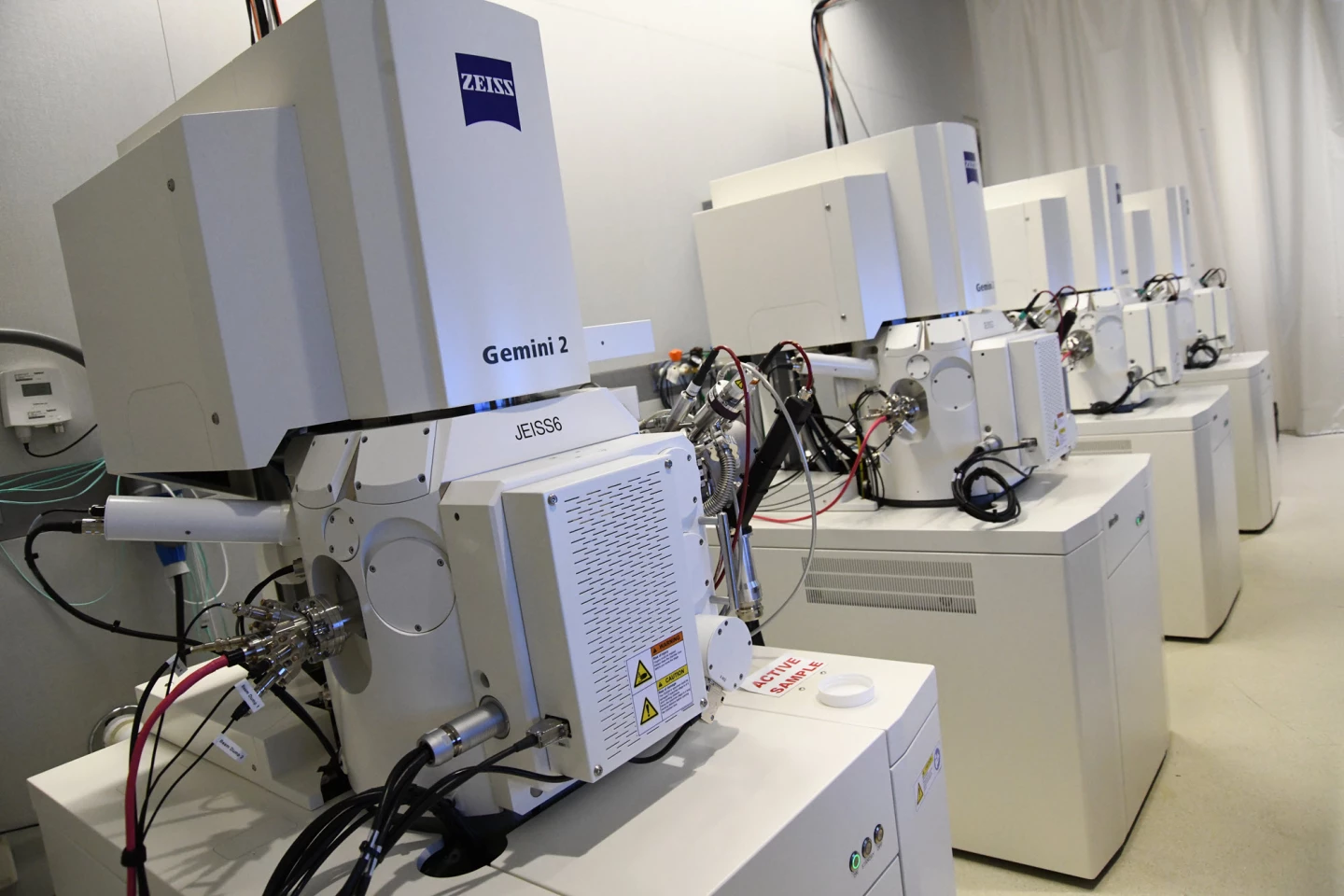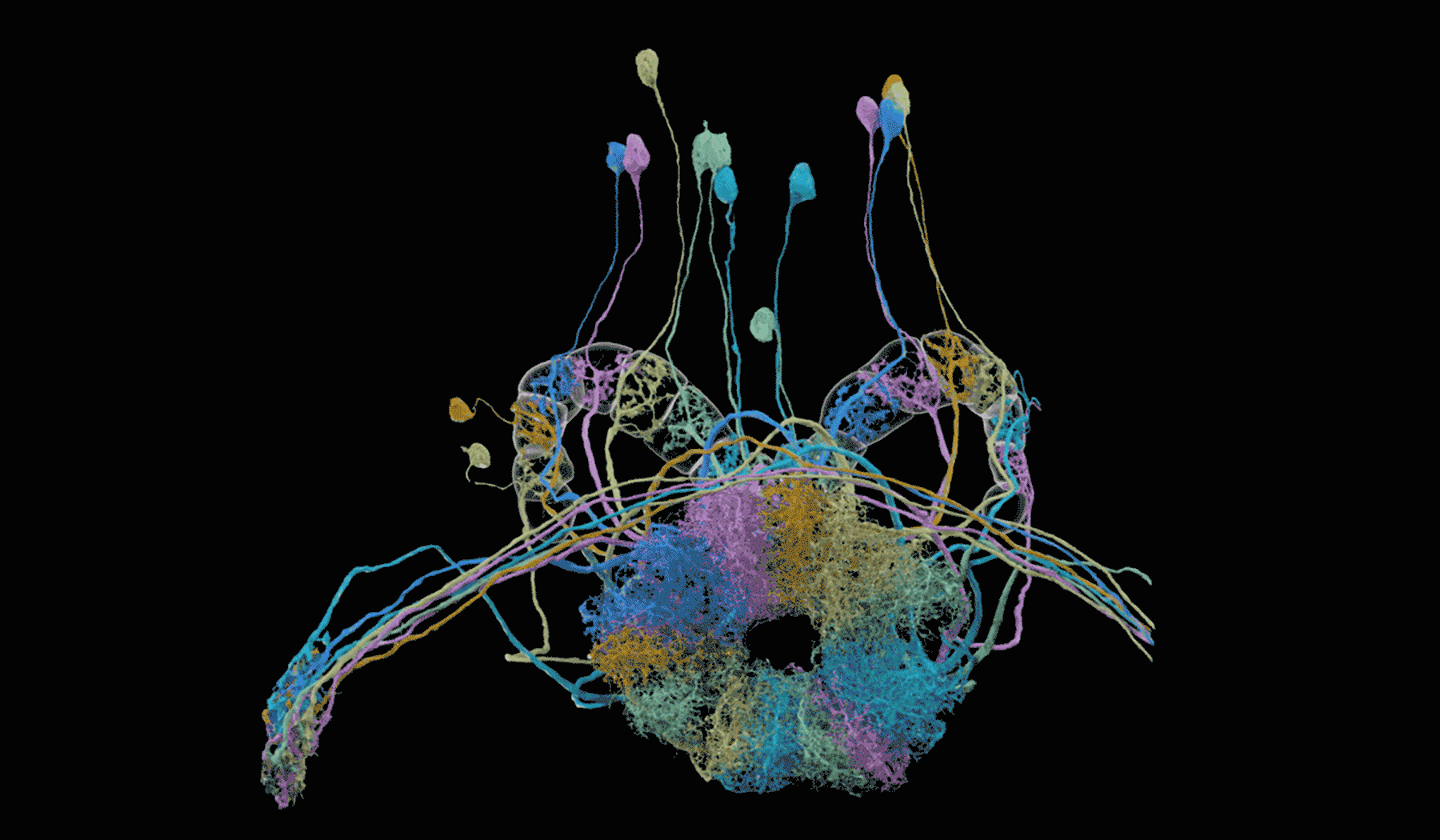When the Drosophila genome was first sequenced and released some 20 years ago, it kicked off a deluge of genetic research that has borne amazing fruit in recent years. The same is about to happen in the field of connectomics, as a Janelia and Google project has just released the beginnings of a neuron-level wiring diagram for a fruit fly brain.
The Connectome
Many scientifically-minded biological determinists believe that we are all merely meat computers, taking in stimulus from the outside world and spitting out responses. That if we had enough data about the structure and function of our brains, we could accurately predict exactly what we'd do in any given situation. That free will is an illusion generated by a beautifully complex biological algorithm – we are all just operating according to our brain structure and experiential inputs.
If that's the case, then research on the connectome must rank among the most important areas of research currently underway. Check out our connectonomics primer if you'd like to know more, but here's the meat of it: the brain is an insanely densely packed spaghetti bowl of twisting, branching neurons, in which each neuron can have a massively variable shape, thickness and 3D geometry.
These neurons can connect to other neurons, sometimes multiple times with the same neuron, at points called synapses. As we put it in the primer: "It's a colossal oversimplification, but the theory is that each of these pathways, with all their touchpoints, branches and connections with other pathways, might represent a thought, memory or action. The more you do it, or think it, the larger and thicker that pathway becomes. The more you learn about it, the more physical connections it forms with other neurons and processes, further building your map of understanding.
"Thus the map of a brain changes over time, constantly reinforcing some pathways as others are left to die from disuse... By the mere act of thought itself, we have the ability to re-wire ourselves to a significant degree, to enlarge some pathways and allow others to drop off. The more you think something or do it, the more a physical part of your brain it becomes – and it's just as possible to let parts atrophy if you ignore them."

Connectomics is the process of attempting to create a three-dimensional map of every neuron in a brain. A full wiring diagram for the meat computer. It's a hideously difficult task even as a snapshot, but in theory, perhaps one day we'll be able to map it in real time and watch the physical changes in the brain responding to stimuli. We'll be able to physically isolate where the memories of your grandma live, or watch the neural pathways grow and connect as you learn to play guitar.
To call the connectome complex is a hilarious understatement; when researchers fully mapped the connectome of the C. Elegans worm, by thinly slicing the brain, scanning each slice and building a 3D model, they ended up with 12 terabytes of data. C. Elegans is the only organism whose connectome has been fully mapped. It has just 302 neurons to trace. The human brain has about 100 billion, at an estimate.
The Fruit Fly project
Researchers from Google and the Howard Hughes Medical Institute's (HHMI) Janelia research campus have been working on taking connectomics to the next level with a project that aims to map a much more complex brain than C. Elegans: that of a fruit fly. These little critters rock about 100,000 neurons in their brains, and the HHMI team has been working on mapping them for more than a decade.
More recently, thanks to a partnership with Google, advances in imaging technology and deep learning, heavily customized high-power microscopes, and a team of data analysts and "neural proofreaders,' the team has been able to accelerate its progress by a factor of 10, leading to an impressive milestone.
Yesterday, the team announced that it's mapped out the entire "hemibrain" of a female fruit fly, a wiring diagram of some 25,000 neurons encompassing major functions like learning, memory, smell and navigation. The hemibrain accounts for about a third of the volume of the fruit fly brain, which, to give you a picture of how densely packed it is, is about the size of a poppy seed.

While the team that mapped the C. Elegans connectome was able to slice it by hand, the Janelia team working on this fruit fly project has gone a lot more high tech. The brains are automatically processed in focused ion-beam scanning electron microscopes, which shoot gallium ions at the brain to precisely blast away each layer without damaging the one beneath. By the end of the process, the physical brain is entirely milled away to nothing, but its digital twin is fully preserved.
The microscopes are vibration-isolated to an incredible degree, each resting on an air cushion table in a purpose-built "Act of God-Proof Room" that's separate from the rest of the Jamelia campus on its own concrete slab. That's because these scans take literally years to complete, and the tiniest vibration could introduce errors that might render the whole project a failure.

The team is now working on scanning the entire central nervous system of a male Drosophila fruit fly in the same way, a process that will be complete by the end of the year if nothing goes wrong. The resulting layer by layer images will take up about 100 terabytes of hard drive space.
Once the images are assembled, it's Google's turn to take over. Google's team has been looking for insanely difficult and complex problems to push the boundaries of its intellectual, computational and deep learning capabilities, and there are few data crunching problems as big or as complex as this: taking slice by slice electron microscope images and using them to identify individual neurons and trace them through the 3D structure of the brain, complete with synaptic connections, giving each its own color code for presentation.
The fruit fly hemibrain images here represent the largest brain connectivity map that's ever been produced of any species at synapse-level resolution. Those 25,000 neurons have more than 20 million synaptic connections between them, and the resulting 3D map has about 26 trillion pixels in it.
The team is releasing its results and data for free use to other scientists and researchers. When the fly genome was sequenced some 20 years ago and released in a similar way, it became a fundamental tool for biological research, and the hope here is that this pioneering connectome work will prove just as useful and influential in the scientific community.
Check out the video below to see some of the hemibrain connectome map, broken down into segments to show the shapes of the central complex, and the visual and olfactory systems in isolation. It's yet another glimpse into the beauty, majesty and incredible complexity of nature at the nanoscale, yet another triumph of human ingenuity and a building block that will unlock many new avenues of research through which we can learn to understand ourselves and other life forms better.







